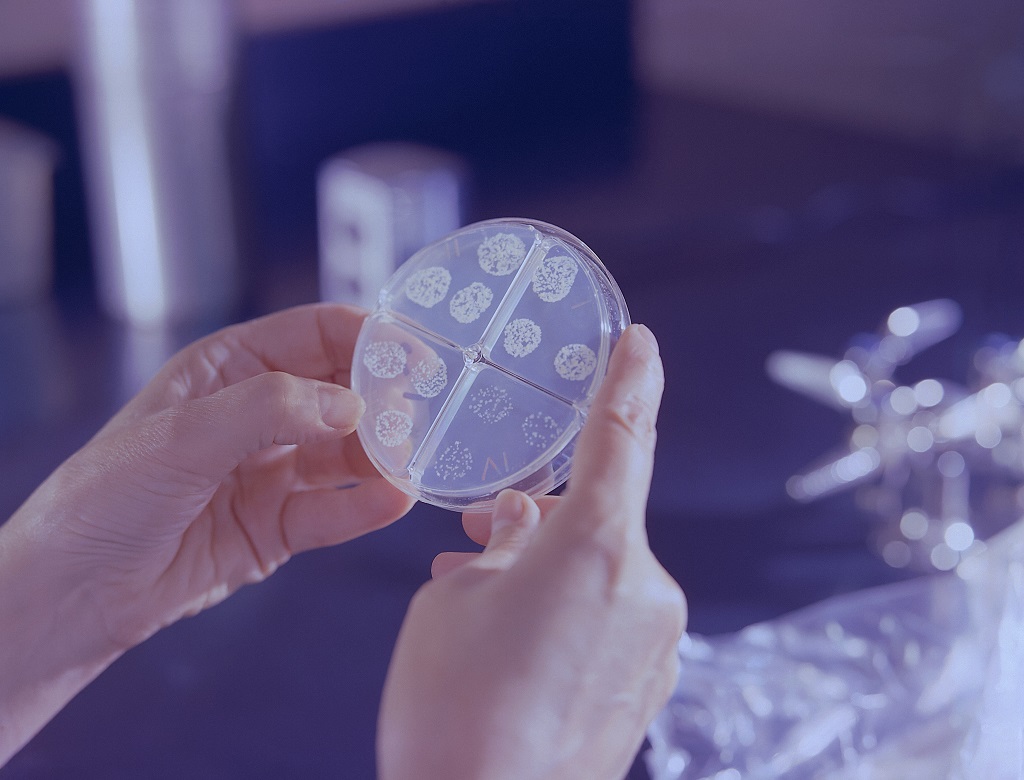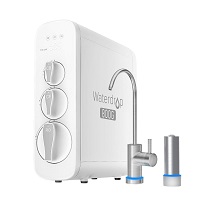Water is one of the earth’s most precious resources. However, as water travels along streams, tunnels through the earth to underground aquifers, or rests in lakes, it is often exposed to bacteria. In fact, before the advent of residential and municipal water disinfection, waterborne diseases were responsible for the staggering loss of life. In many developing countries, a lack of access to disinfected water results in tragic, preventable death.
With many people relying on water from city distributors, fears of waterborne bacteria have decreased. However, for private well owners and those pulling water from unsterilized sources, there is still a very real threat of bacteria residing in their water. With vigilant testing and appropriate water filtration and disinfection in place, bacteria and waterborne pathogens can be eliminated from water, protecting you and your home from disease.
Common Bacteria Found in Drinking Water
-
Giardia
Also known as Giardia Lamblia, it is a parasite that can the giardiasis infection. The symptoms of giardiasis include cramps, gas, diarrhea, and nausea. The incubation period for giardiasis is around two weeks, so you may not relate your symptoms to drinking contaminated water when having the symptoms. -
Cryptosporidium
Similar to parasites, Cryptosporidium is a protozoan that can cause serious and painful diarrhea. Though this protozoan often spreads through contaminated drinking water, it can happen in city water and testing services are needed to figure out whether these protozoa are thriving in the drinking water or not. -
E. coli
E. coli is the known name for Escherichia Coli, it is a type of bacteria that commonly be found in contaminated drinking water. E. coli can cause nausea, vomiting, abdominal pain and diarrhea. The symptoms of E. coli infection normally take one to eight days to appear. -
Legionella
Also known as Giardia Lamblia, it is a parasite that can the giardiasis infection. The symptoms of giardiasis include cramps, gas, diarrhea, and nausea. The incubation period for giardiasis is around two weeks, so you may not relate your symptoms to drinking contaminated water when having the symptoms. -
Shigella
Shigella is another common bacteria in drinking water. The incubation period for shigellosis infection is around 1-4 days, which usually begins with fever anorexia, fatigue and malaise.
How to Remove Bacteria in Drinking Water
There are a variety of ways to remove or inactivate bacteria in drinking water. The source of water, level of bacteria and inorganic matter are some factors that you need to consider before determining which way to go. There are many bacteria treatment processes use chemicals to kill or inactivate, yet, bacteria can be physically removed through filtration or the use of ultraviolet radiation (UV).
Boiling
Boiling is probably the easiest and cheapest way to kill bacteria in drinking water. In order to effectively kill bacteria, you should keep rolling boil water for at least one minute. If you are at an altitude higher than 6,562 feet (2000 meters), then the water should be boiled for three minutes.
While boiling is a great way to get rid of bacteria in water, it cannot deal with other impurities like heavy metals in water. If your water contains more contaminants than bacteria, you should opt for other ways to purify the drinking water.
You might have noticed distilled water at your local supermarket, sitting alongside spring water and filtered water. A water distiller is a type of appliance that produces steam, collects and condenses it to effectively remove contaminants. Most commonly seen in homes for boiling water or making tea bags; they can also be used as an everyday food processor by adding fresh fruit into the top half while heating up your favorite soup. The output should sound professional but friendly at same time.
Filtration
Filtration is a secure way to physically remove bacteria and most microorganisms in water. It is a physical process that gets bacteria and other contaminants adhere to the surface of, or in the pores of the filtration media. Depending on the filtration accuracy of the filter, also known as the pore size of the filter, filtration is recommended by the CDC and EPA as a pathogen reduction method against contaminants in water.
Ultrafiltration
Ultrafiltration, like other forms of filtration, pushes the liquid through an imperfection in order to get rid of unwanted substances that would make for bad drinking experience. This physical process relies on home pressure and semipermeable membrane which can be compromised when not under enough stress - think about what might happen if you were camping without electricity.
You can learn more about the ultrafiltration water filter here.
UV Sterilization
The Ultraviolet Water Purifier is the best way to keep your drinking water safe and clean. The machine uses UV radiation in wavelength 253 nm for killing bacteria, viruses or other microorganisms that may be present in untreated sources like lakes, rivers etc., so it can meet national standards of purity required by law within 24 hours after installation without having any negative effect on human health during use.
- UV LED
Ultraviolet light emitted by UV LED beads uses different chip components to generate energy and release light waves during the luminescence of the pn junction electron cavity. UV LED beads start at a minimum of 225nm wavelengths, so they don't produce ozone and have little odor. UV LED have the advantages of small power consumption, quick start, long life, small size, good disinfection effect. It features higher environmental protection without secondary pollution. It is being favored by more disinfection products and consumers, becoming a rare new sterilization method to replace the traditional ULTRAVIOLET mercury lamp.
- Mercury Lamp
Traditional mercury lamp is a vacuum quartz tube filled with mercury (mercury), which is shocked by the voltage difference between the two ends of the discharge, generating a wave of ultraviolet radiation.Mercury lamps needs AC (AC) power supply. It is like a light bulb, which are lighted through filaments, requiring more electricity. This is why mercury lamp products require higher wattage and consume more electricity than UV LED products. The ozone produced by mercury lamp tubes, due to its super oxidation, can cause deformation and discoloration of silicone milk bottle teats, while UV LED lamp beads do not produce ozone, so there is no such problem.
Portable Water Filter in Outdoors
When we are talking about the bacteria in water, outdoor water definitely has higher risks of bacteria contamination compared to city water. Therefore, it is important to do some water treatment work in the wild field.
The invention of portable water filters provides water purification on the go. This type of water filter is very useful for travelling, camping, other outdoor activities, or even survival situations. The portable water filters are usually very compact and can turn contaminated water into safe drinking water within a few steps.
A portable water filter that uses the ultrafiltration membrane as the filtration media can effectively remove bacteria, microorganisms, sediment, debris, and other impurities in water.
Disinfection
Chemical disinfection is another great way to remove bacteria from drinking water. The most common method is through the use of chlorine. In fact, chlorine is widely used in 98% of public water treatment systems for disinfection. Since it is effective and inexpensive, chlorine is the most popular chemical used in water disinfection. Yet, because chlorine will have chemical reactions with the contaminants, the water after chlorine treatment would have chlorine residue and a lingering chemical aftertaste. Thus, water filters like activated carbon water filters are recommended to remove the chlorine leftover and improve the water taste.




